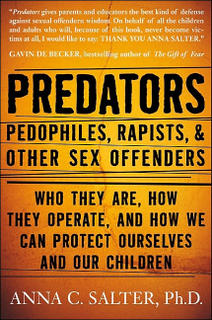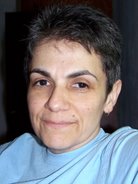
Continued from previous page
The study, conducted by the John Jay College of Criminal Justice in New York, covered 1950 to 2002. It found that 4 percent of priests were abusers. A total of 4,392 men abused 10,667 minors. The largest segment of victims, 40 percent, were boys between the ages of 11 and 14. Men ordained prior to 1979 committed 68 percent of the abuse. Victims younger than 10 accounted for 22 percent the cases. Seventy-five percent of the abuse took place between 1960 and 1984, CNS reported.
According to Dr. Anna C. Salter’s book “Pedophiles, Rapists, and Other Sex Offenders” (Basic Books, 2004), girls greatly outnumber boys as sexual abuse victims. Depending on which study you look at, up to 38 percent of girls in the U.S. have been sexually abused by the time they reach age 18. The estimates for boys run up to 16 percent, Salter wrote. (In the studies Salter cites, only 5 percent of the victims reported the crimes committed against them.)
Using high-end estimates for girls and boys, the typical population of child and youth sexual-abuse victims should be 37.2 percent male. Given the disproportionate number of male victims in the clergy abuse scandal, the ban on gays seems like a no-brainer – until you consider one fact: More than 95 percent of adult men who sexually abuse children of either gender claim to be heterosexual.
Adult men who abuse boys outside of their own families are rarer than those who abuse girls. But they claim far more victims. Salter writes about a study of imprisoned offenders. These men had to submit to polygraph tests and admit their true number of victims as a condition of their treatment. This study found that men who abuse girls out of the home typically admit to 20 victims. Those who abuse boys admit to 150 victims.
The notorious John Geoghan, a defrocked priest in the Archdiocese of Boston, is typical of the highly active offender who targets boys. One hundred thirty victims accused Geoghan of abuse, which took place from the Sixties to the Nineties. Geoghan was convicted of fondling a 10-year-old boy in 2002. Sentenced to nine to 10 years in prison in February 2002, Geoghan was murdered by a fellow inmate in August 2003.
Paul Perruzzi of Pompton Lakes, N.J., is an example of the “heterosexual” abuser who targets boys. Perruzzi, a married father, abused at least 21 boys in their early teens, according to a 2000 story in The Record. He was sentenced to five years in a prison for sex offenders in Avenel.
In some cases, abusers are sexually fixated on one gender and a certain age range. Other abusers will take advantage of any child.
According to CrimeLibrary.com, Father James Porter of Massachusetts molested at least 222 children of both sexes across five states. But his crimes came to light while he was serving as a priest in the Archdiocese of Boston. Born in 1935, he molested his first known victim, a 12-year-old boy, at a church camp in 1953. His abuse of children continued through the Eighties. Eventually exposed as a child molester, Porter faced trials in Minnesota and Massachusetts. In December of 1993, he was sentenced to 18 to 20 years for 41 counts of child molestation.
Just what is the church accomplishing anything by keeping out priests who acknowledge same-sex attraction towards adult men?
The church may set any standards it wishes for entry into the priesthood. The Catechism of the Catholic Church (issued in 1994 and compiled under the direction of Pope Benedict) states: “No one has a right to receive the sacrament of Holy Orders. Indeed no one claims this office for himself; he is called to it by God. Anyone who thinks he recognizes the signs of God's call to the ordained ministry must humbly submit his desire to the authority of the Church, who has the responsibility and right to call someone to receive orders. Like every grace this sacrament can be received only as an unmerited gift (1578).”
So the church is well within its rights to ban gay priests. But will children be safer? How can it be when 95 percent of men who abuse children call themselves heterosexual? Is this ban an easy way to improve the church’s image?
Child molesters are experts at presenting themselves as respected members of the community. That’s why they call themselves heterosexual. They will continue to do what they are best at – lie, manipulate, conceal.
A multi-faceted approach is the best way to keep Catholic kids safe at church and everywhere else. Some important protections that are already in place include:
* Psychological testing and background checks to keep predators out of the priesthood. Screening of all adults and teens who work with children in the church.
* Continuing to teach each child that he or she has the right to say no to “bad touches” and to report the experience to a trusted adult.
* Warning parents and other concerned adults about predator traits and tactics. Traits of a typical adult who sexually abuses children or teens: male (only 10 percent of abusers are female); focuses on children, seeks opportunities to work with youngsters (coaching, teaching), has no adult spouse or romantic partner, has no adult activities or hobbies; finds victims by isolating a single child for personal attention, private time, and gift giving.
* Urging parents, teachers, and others to believe children who report abuse.
It is widely known that since the 1980s until the present, many U.S. priests have become open about being gay. In my own experience as a religion journalist, I have spoken with many Catholics (lay and ordained) who say that a high percentage of priests they know are gay. Father Mychal Judge, the Franciscan friar who died on 9/11 while ministering to firefighters at the World Trade Center, openly acknowledged his homosexual orientation, according to Michael Ford’s book “Father Mychal Judge: An Authentic American Hero” (Paulist Press, 2002). As Ford reports it, Judge was an exemplary priest.
And what of the church’s message to homosexual men and women?
The Catechism states: “The number of men and women who have deep-seated homosexual tendencies is not negligible. This inclination, which is objectively disordered, constitutes for most of them a trial. They must be accepted with respect, compassion, and sensitivity. Every sign of unjust discrimination in their regard should be avoided. These persons are called to fulfill God's will in their lives and, if they are Christians, to unite to the sacrifice of the Lord's Cross the difficulties they may encounter from their condition.
“Homosexual persons are called to chastity. By the virtues of self-mastery that teach them inner freedom, at times by the support of disinterested friendship, by prayer and sacramental grace, they can and should gradually and resolutely approach Christian perfection (Paragraphs 2358-2359).”
Prior to 1997, the Catechism included the following sentence in paragraph 2358: “They do not choose their homosexual condition; for most of them it is a trial.” (This first part of the sentence was deleted by the Congregation for the Doctrine of the Faith.)
In the purge to come, the church may feel it has accomplished something important. But will children be safer? And will faithful, chaste gay and lesbian Christians be treated with respect, compassion, and sensitivity?
Sources
“A Trusted Neighbor and a Terrible Secret,” The Record (Bergen County, NJ), Nov. 19, 2000, Pg. A-1.
Anna C. Salter, “Pedophiles, Rapists, and Other Sex Offenders” (Basic Books, 2004).
Michael Ford, “Father Mychal Judge: An Authentic American Hero” (Paulist Press, 2002).
Return to main page to comment on article.

No comments:
Post a Comment